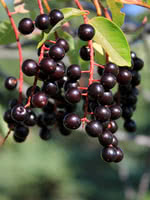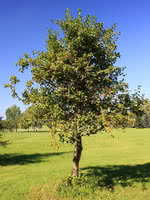Mon-Fri 9am - 5pm Mountain time
Western Chokecherry vs Washington Hawthorn
Prunus virginiana var. demissa
Crataegus phaenopyrum
CUSTOM GROW
Western Chokecherry is a shrub or small tree commonly used for farmstead and field windbreaks.
It produces white flowers in the spring and edible dark purple fruit that matures between September and October. Its cherries are great for making for making jams, jellies or wine, but are not very palatable for raw eating.
Washington Hawthorn is an attractive ornamental shrub that is dense enough to plant as a privacy screen. It produces clusters of white blooms in late spring to early summer.
Washington Hawthorn's red berries last throughout winter, bringing squirrels and birds to your property. In the fall, its foliage turns beautiful orange, scarlet, or purple.
One of the most overlooked trees on the prairies. This tree is often used as rootstock, a wildlife attractor, or a boulevard hedge. Give this one a second look.
This species is also known as one of the more salt-tolerant species for those with saline soils.
Please note: this plant is poisonous to dogs.
Western Chokecherry Quick Facts
Washington Hawthorn Quick Facts
Toxicity: toxic to horses, cattle, etc.)
In row spacing: 0.9 m (3 ft)

